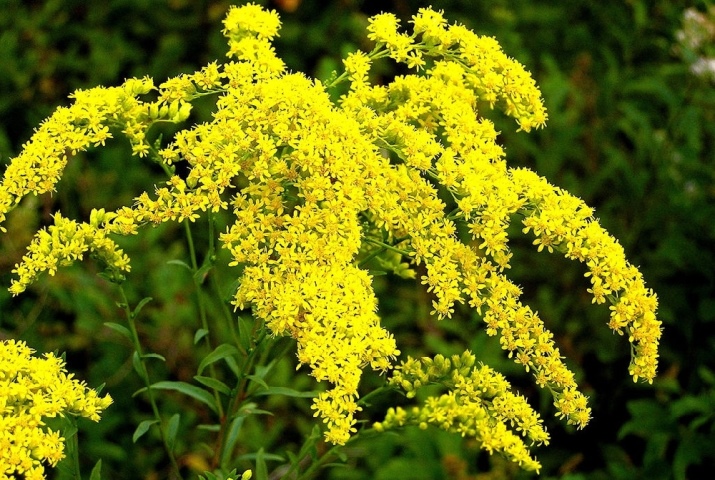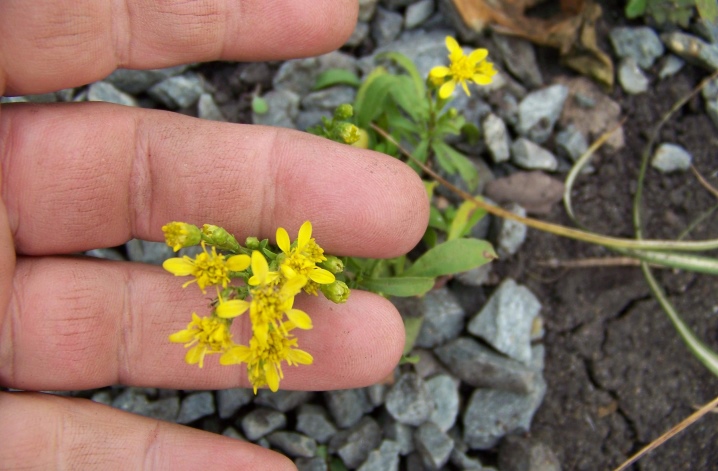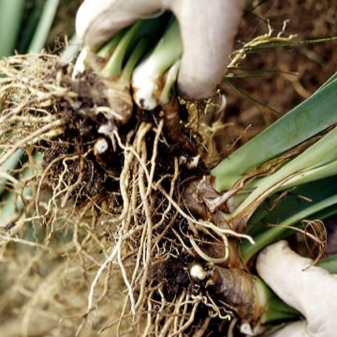Common goldenrod: description, planting and care

A perennial plant goldenrod is preferred by many gardeners to grow on their backyards. Let's take a closer look at the description of this culture and talk about proper planting and caring for it.






Peculiarities
Common goldenrod (Solidago virgaurea) belongs to the Astrov family. Among all the varieties, this particular type of goldenrod is considered the most common. Many gardeners call it the "golden rod". It grows either in the Caucasus or in Western Siberia. Translated from Latin, the name of this plant is translated as "healthy", which characterizes it very well.

If we consider the description of the culture, then we can understand that The common goldenrod is a bare or hairy plant whose root goes very deep into the soil. Above the ground, you can see a shoot, the height of which reaches 1 meter. On it, green leaves with a jagged edge are alternately located. Inflorescences are racemose with a large number of baskets. They contain flowers with a yellow tint. Sometimes they are too small, so it will be very difficult to see them in the baskets.
Common goldenrod blooms from late spring to early autumn. This culture has healing properties and is also a honey plant, so it is often used as a medicine. It is worth considering in more detail all the components of this flower.

The common goldenrod contains several organic acids, as well as saponins, essential oils and many other equally useful elements.... Due to such a rich amount of nutrients, goldenrod acts as an anti-inflammatory, diuretic, and wound healing agent. In addition, it can help to relieve spasms for a while.
If we talk about alternative medicine, then here goldenrod is used for diseases such as scrofula, indigestion, cutaneous tuberculosis, stomatitis and other diseases. Since this plant has a healing effect, it is also used for swelling of the extremities, and for inflammatory processes, for suppuration of wounds and even for fractures.

In traditional medicine, various preparations based on goldenrod are used. For example, it is very often used in gynecology to combat such unpleasant diseases as candidiasis or cystitis. Some doctors recommend that their patients use goldenrod for prostatitis and even impotence.
Besides, the plant also has some contraindications. So, you can not take it to pregnant women or nursing mothers. It is also recommended to bypass it for people who suffer from glomerulonephritis, high blood pressure or allergies, as well as those who are insulin dependent. Such contraindications should not be ignored, because it is fraught with negative consequences.

How to plant?
In one place, this plant can grow without transplanting for more than 10 years. Therefore, it is very important to choose the right place for the goldenrod. This plant can grow on any soil, as well as anywhere, be it well lit or, conversely, in partial shade. The main thing is to take into account that in sunny areas, flowering will begin a little earlier and will be more lush than in partial shade.

However, do not forget that goldenrod is a very aggressive herb and multiplies very quickly. This means that he will be able to displace weaker plants. To avoid this, you need to ensure that the crop cannot be sown on its own. Particular attention should be paid to the choice of soil for planting goldenrod. Although this is not a very whimsical plant, it is best to plant it on fertile, as well as on slightly damp soils.
Sandy or loamy soils are most suitable for this.

The best time for planting is considered spring - April or May. At this time, the earth is already warmed up enough, respectively, the plant will be able to adapt much faster. In the case when common goldenrod is planted with a bush, first you need to prepare a landing hole. Its depth should correspond to the length of the root system of this plant. You need to prepare it a few days before planting.

At the very bottom, it is necessary to fill a drainage layer.
It can be fine gravel or crushed brick. After that, fill in a little garden soil, and then a layer of deciduous humus or peat. From it you need to make a small mound, and then lower the acquired seedling there. The roots must be carefully spread out, and then all the voids must be covered with earth. Then everything needs to be well tamped and watered. In the event that more than one bush is planted, the distance between the plants should be at least 40 centimeters. After all in the future, the seedlings will grow too quickly.


How to take care of it properly?
Like any other plant, common goldenrod requires at least a little attention from gardeners. By itself, solidago is unpretentious, but you still need to water or feed it. In addition, the care also includes pruning faded inflorescences, and sheltering it for the winter.

Top dressing
Watering
It is not recommended to regularly water the goldenrod. It is enough to do this on dry and hot days that are too long. After all, overdried land will contribute to the appearance of such an unpleasant disease as powdery mildew. Watering is best done in the morning or evening, when the sun is not too bright.
You can carry out this procedure with an ordinary watering can and a hose.


Fertilizers must be applied 2 times a year. The first feeding should be done in early spring, and the second in the fall. You can use both organic and mineral fertilizers. In spring, the plant requires a large amount of nitrogen, up to 20% of the total applied mass. Therefore, when buying mineral fertilizers, you must definitely pay attention to this. In autumn, ammonium sulfate can be added.
As for organic fertilizers, you can use wood ash, manure, and deciduous humus. They can be applied both in spring and autumn.


Pruning
Pruning is required for the plant at different times. For example, in the fall, it is necessary to cut the stems so that only 8-15 centimeters remain above the ground... Such pruning will allow you to cover the shrub well for the winter. As for spring pruning, it should be done after common goldenrod begins to grow. During this period, all weak stems are cut, as well as those that grow inside the bush. Besides, you need to remove all rotten or frozen stems... Such pruning will make the bush powerful, and the flowering more luxuriant.
Also, do not forget to cut off all branches that will fade. This will not only save the plant from self-sowing, but also allow it to bloom longer.


Reproduction methods
There are several breeding options for this plant. Each of them has its own characteristics, which you need to familiarize yourself with in more detail.
Seeds
Experienced gardeners rarely use this option. After all, the seeds of common goldenrod quickly lose their ability to germinate. However, fresh seed grows well in the ground. Sowing should be carried out either at the end of November or at the beginning of April.

To begin with, the seeds must be soaked in water and held for several hours in a damp cloth. In the meantime, you can start digging the chosen place. When the site is dug up, you can start sowing seeds. Planting depth should be up to 4 millimeters. After that, the seed furrows can be sprinkled with a thin layer of earth.
If the seeds were sown in the spring, then the seedlings should appear in 2-3 weeks. When such a process was carried out in late autumn, they will appear only in early spring. When the seedlings grow a little and get stronger, they can be planted. The distance between them must be at least 40 centimeters. Fresh planting material should have 100 percent germination.


Cuttings
Such a method as grafting is quite popular. The survival rate of the planting material is also 100%. First you need to start harvesting the cuttings themselves. This is best done in early spring, even before buds appear on the stems. You need to choose only those shoots that are already well formed. This can be the top of the stem or its middle.
Very often, young shoots that appeared after the pruning process are used as such planting material. All cuttings must be cut with the "heel". After that, they need to be planted in the soil prepared in advance. It must be well moisturized.
Cuttings take root quickly, the main thing is not to forget to water them regularly.

By dividing the bush
Such a process is possible only when the common goldenrod bush is already well enough strong and rooted. This only happens after 4-5 years. You also need to know that too mature bushes will be very difficult to dig out, as their roots become too large.


First you need plenty water all the ground around the bush. After that, you need to wait a little, so that the moisture is completely absorbed, only then can you start digging out. This must be done very carefully so as not to damage the root system. After that, the bush must be divided into several parts, each of which must have roots.
Before that, you need to dig holes and plant all the delenki in each of them. This should be done according to the same principle as when planting seedlings. This method allows you not only to get several bushes of the plant, but also to renew the old bush.

Diseases and pests
Common goldenrod has a high resistance to both diseases and the appearance of various insects. But, like any other plant, it is still subject to their attack. The most famous pest of goldenrod is such a small insect as Corythucha marmorata... Another pest that can ruin the attractive appearance of a flower is Argyrotaenia citrana. When such a caterpillar attacks a plant, its leaves begin to curl.


You can get rid of pests with the help of insecticides. However, this is only possible if common goldenrod is grown as a decorative color.
If they do this to obtain medicinal raw materials, then pests can only be destroyed with folk remedies that are harmless to the plant.


As for diseases, most often this plant affects powdery mildew... In this case, a white bloom begins to appear on parts that are directly above the surface of the earth. As mentioned above, many gardeners face this disease. This has to be experienced during hot and dry summers. To save your plants, bushes need to be planted rarely, watered on time and always make sure that there is no white bloom on the leaves.


If the bush is struck by rust, it must be urgently dug up and destroyed. In addition, the land where it was located needs to be treated with a special solution. You can use both Bordeaux mixture and copper sulfate.This will protect the bushes that are nearby.


Summing up, we can say that common goldenrod is a rather useful plant.
Therefore, you need to think about planting it in your personal plot. After all, such a plant not only looks beautiful, but can also be used to prepare various potions.
For an overview of goldenrod, see the video.







































































































It is necessary to destroy it, otherwise you will not bring it out.
The comment was sent successfully.